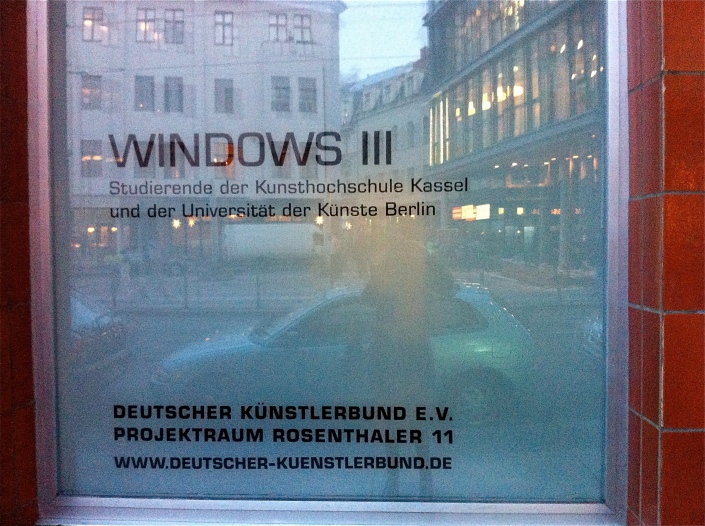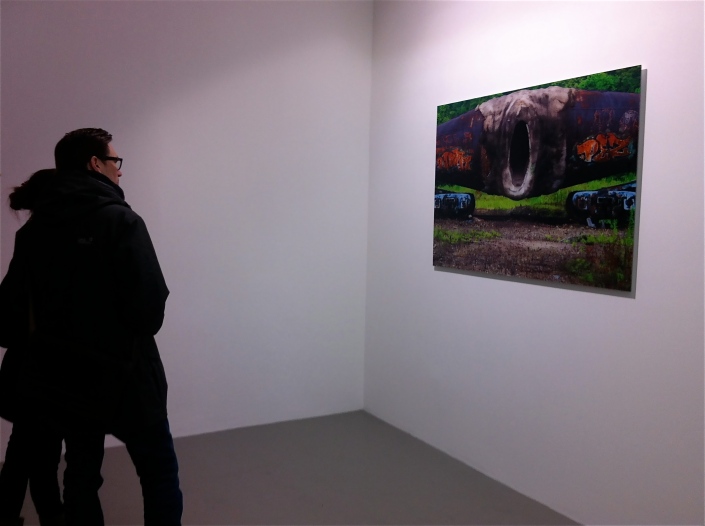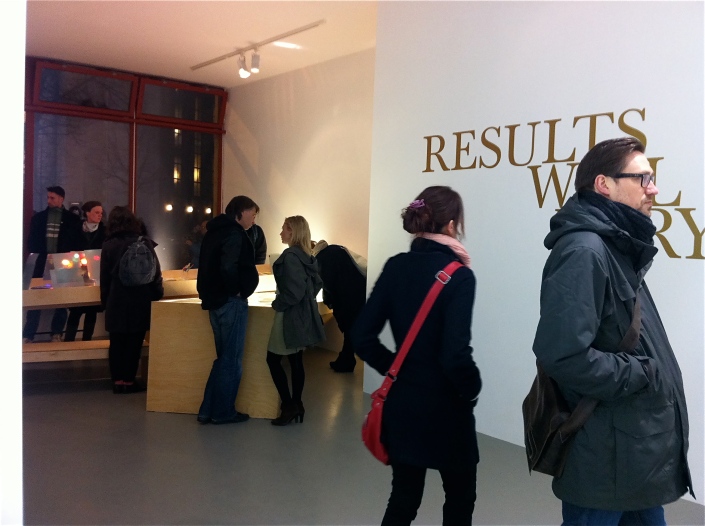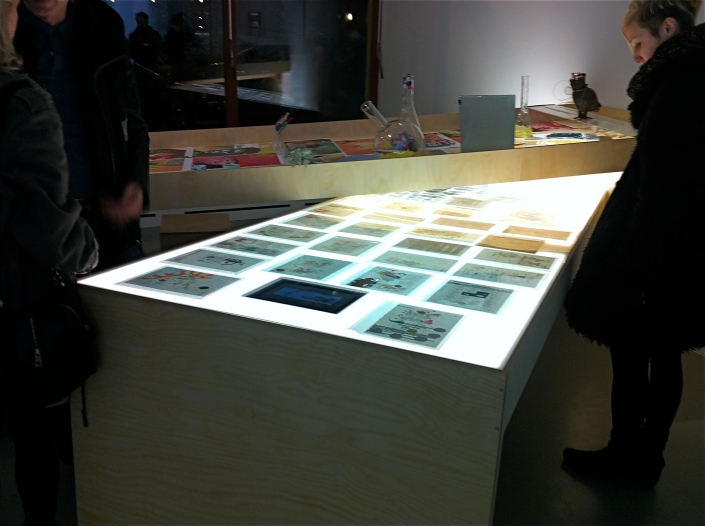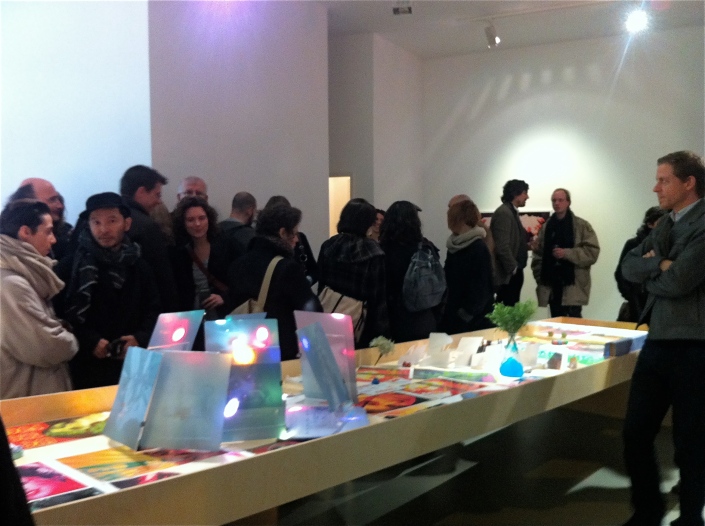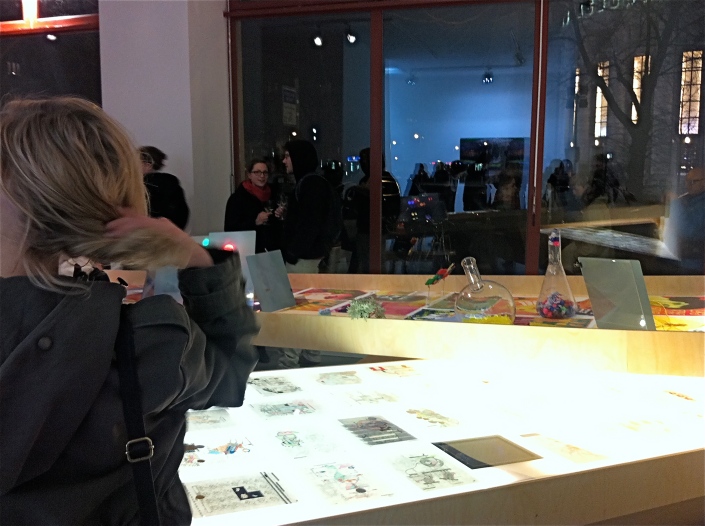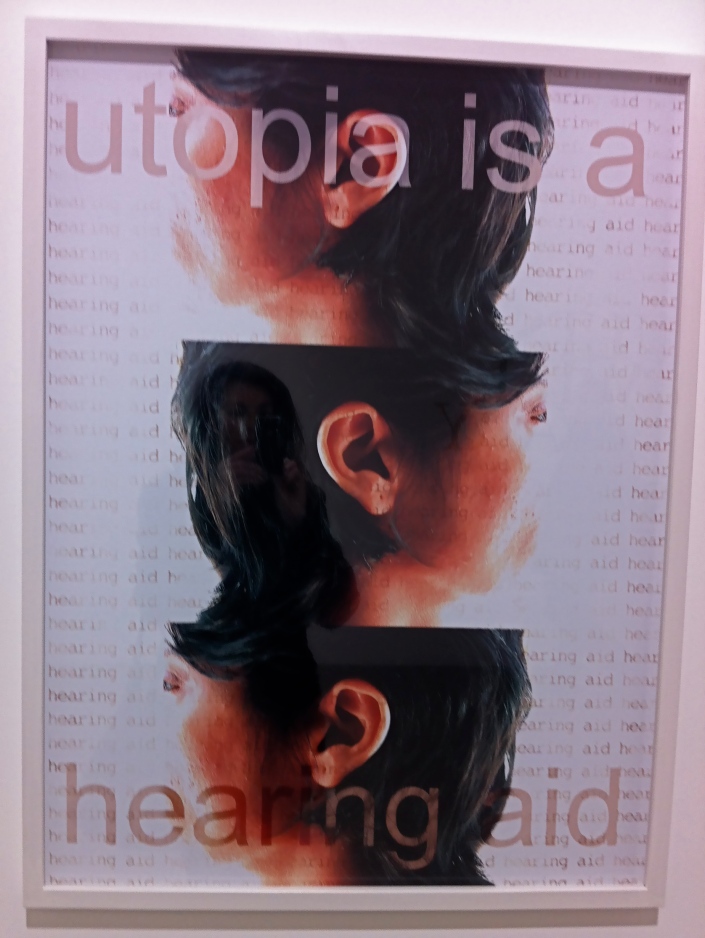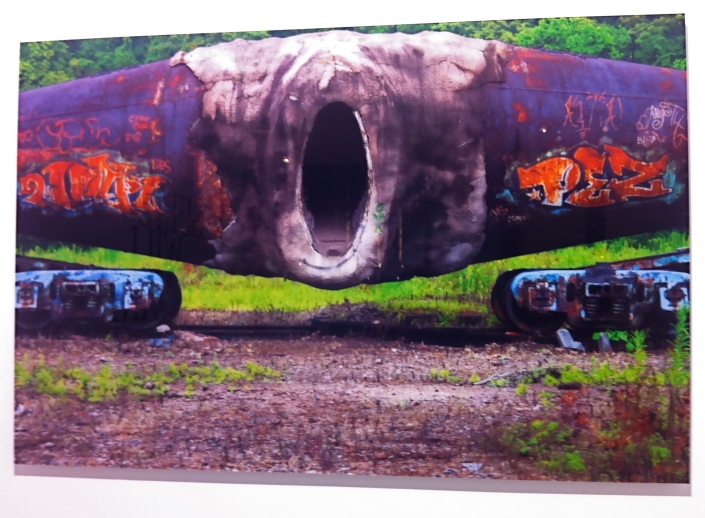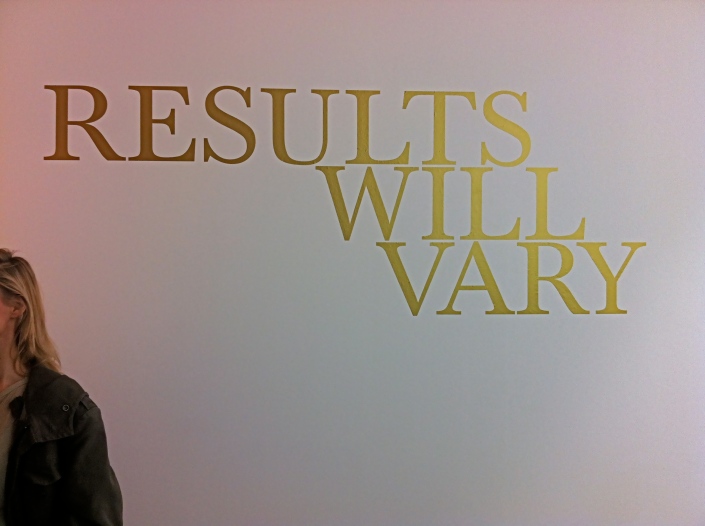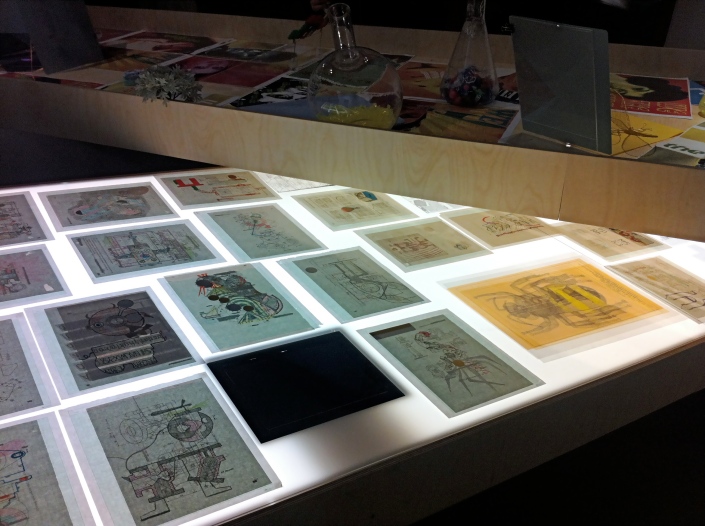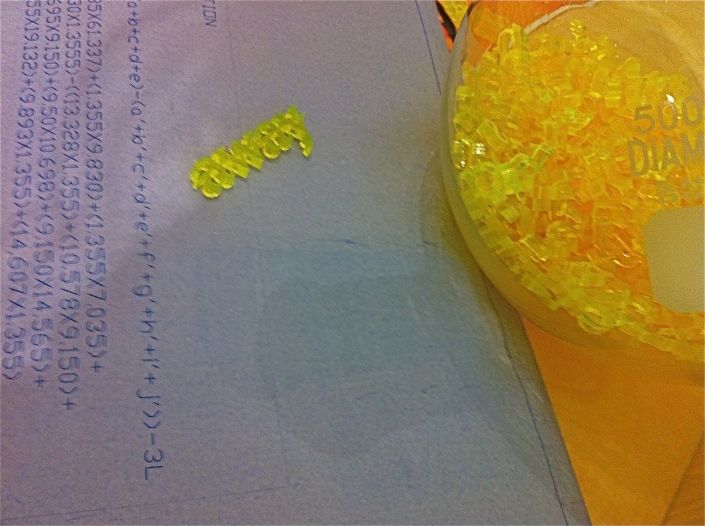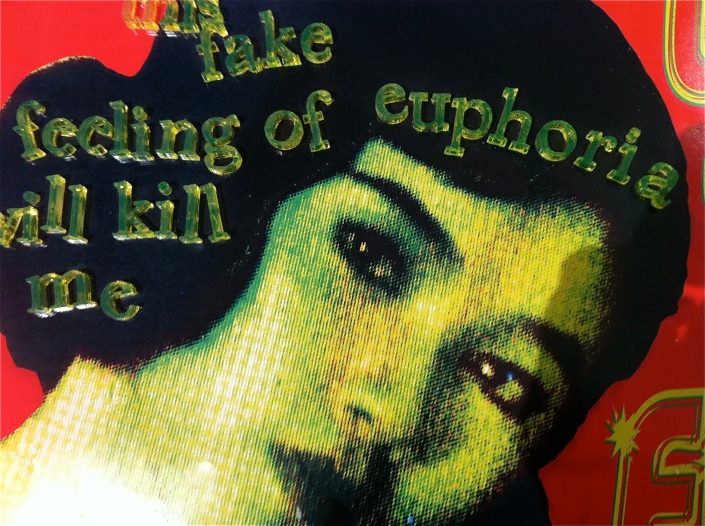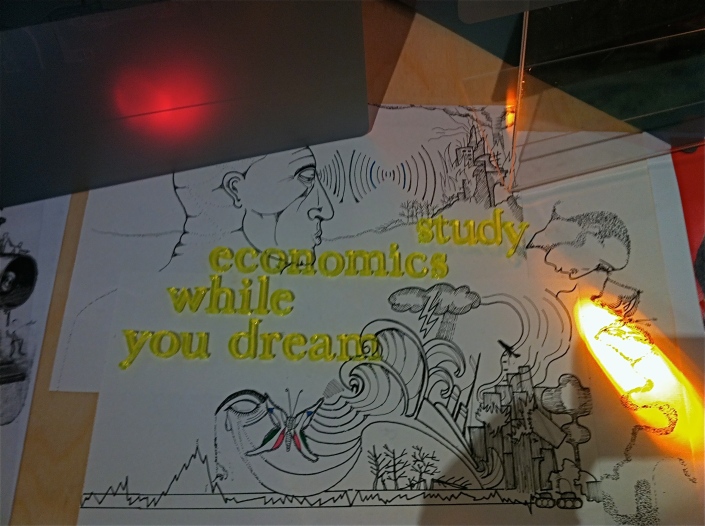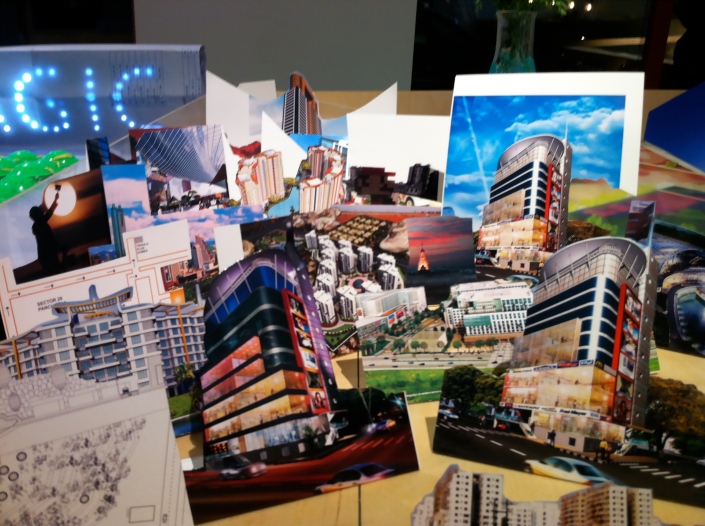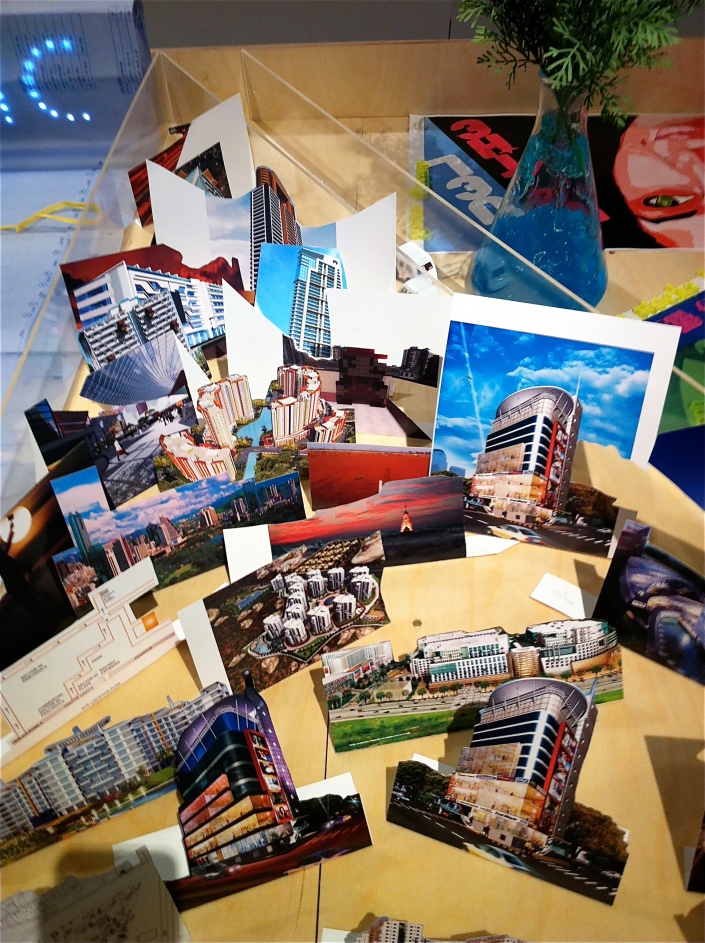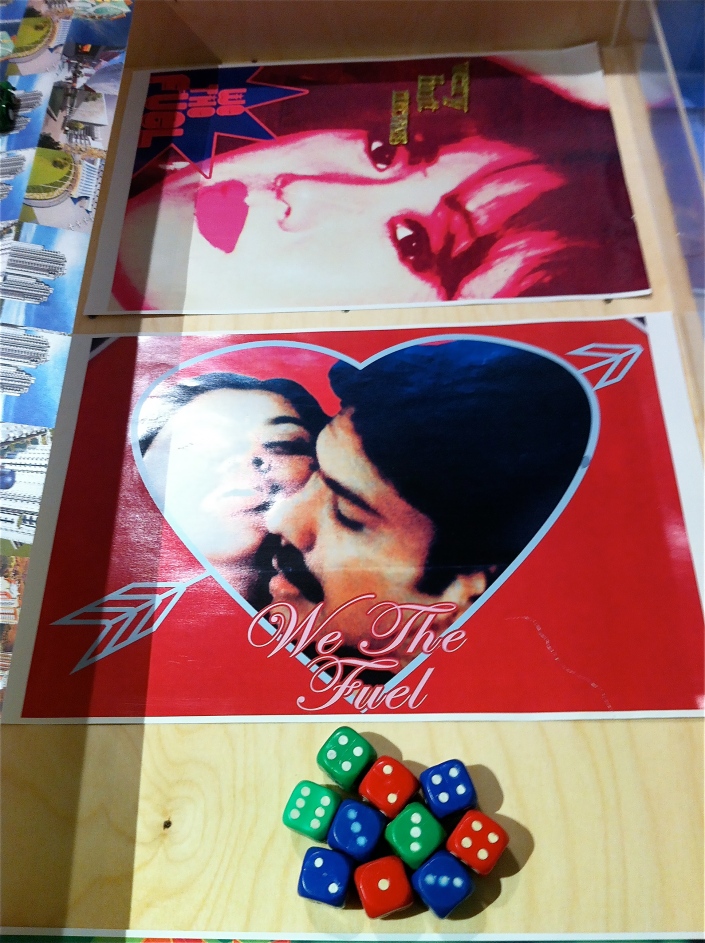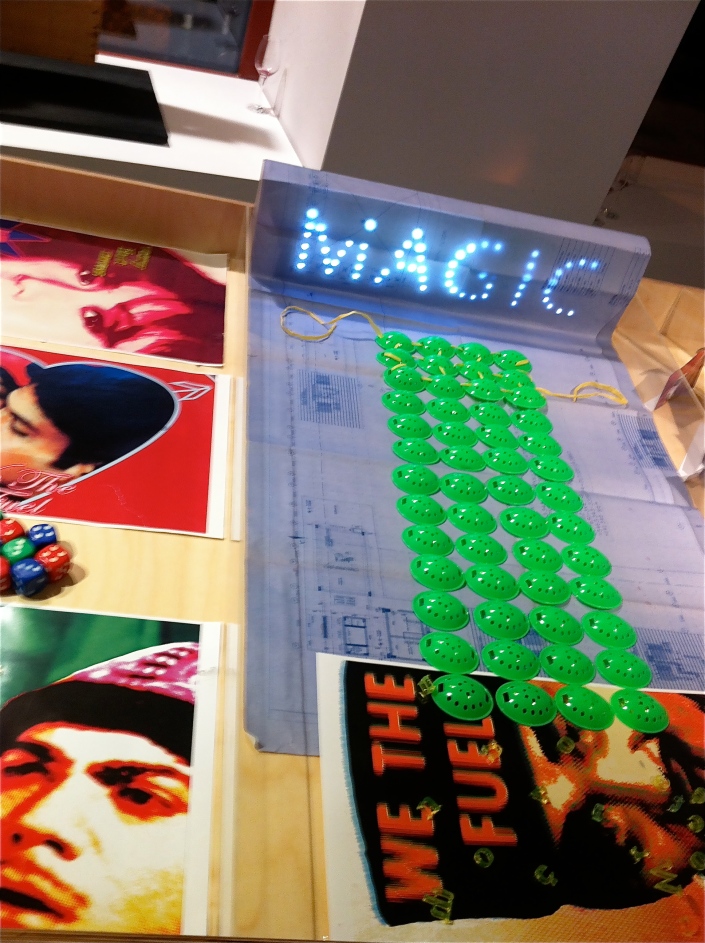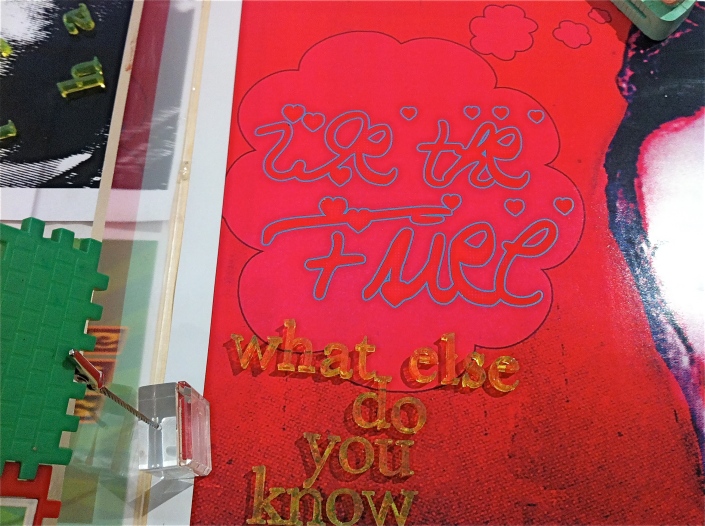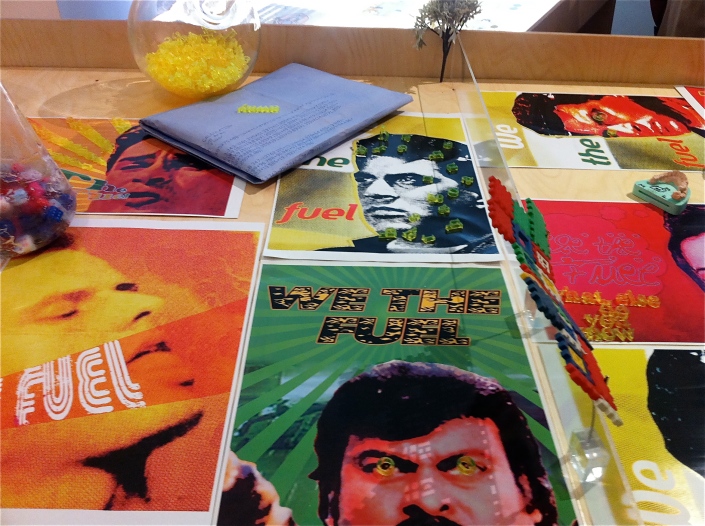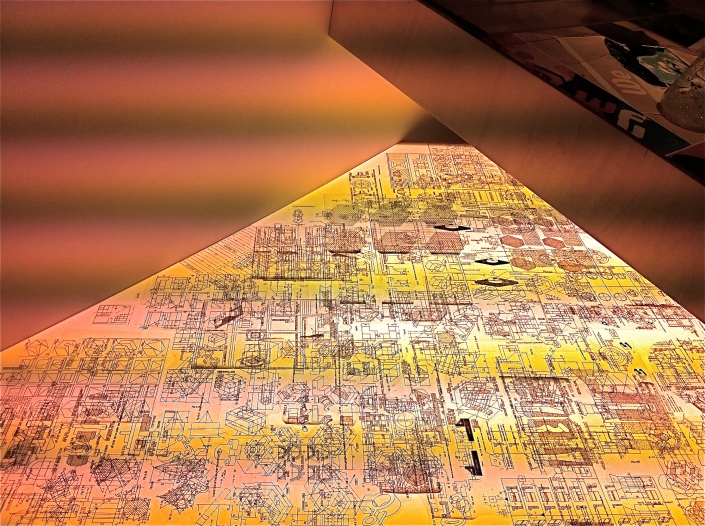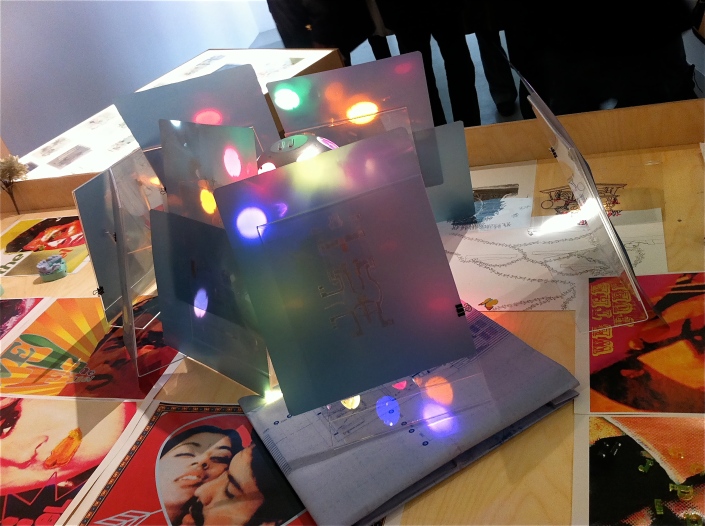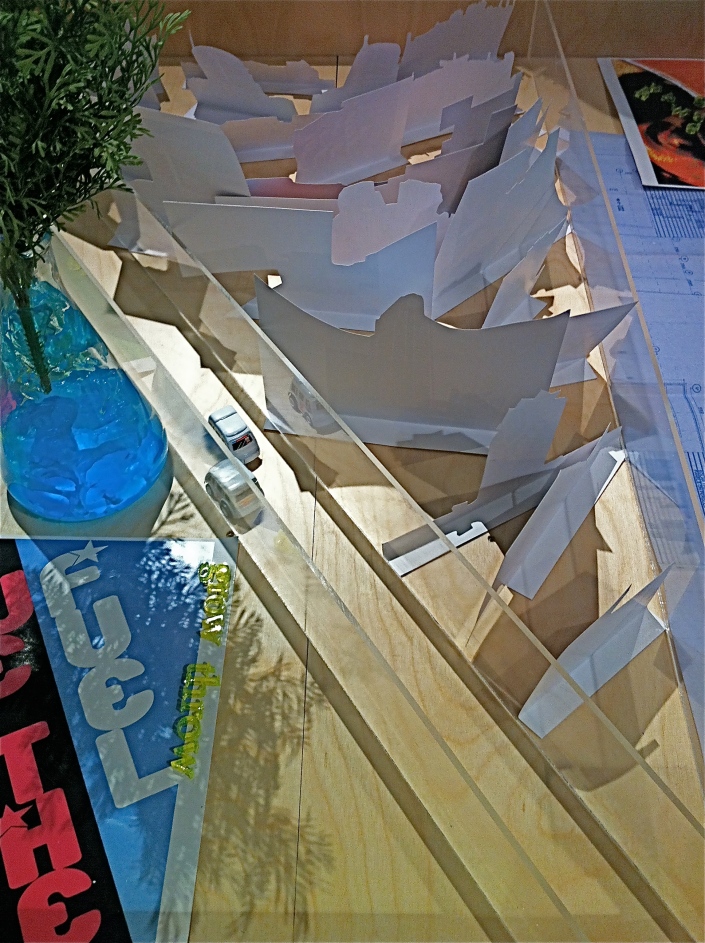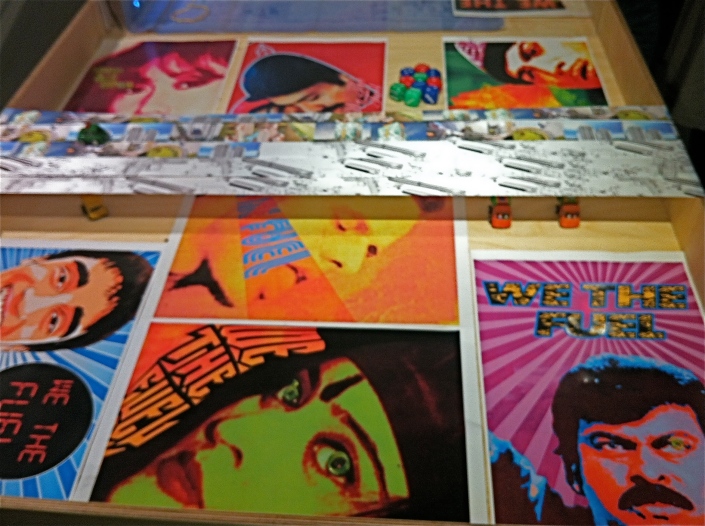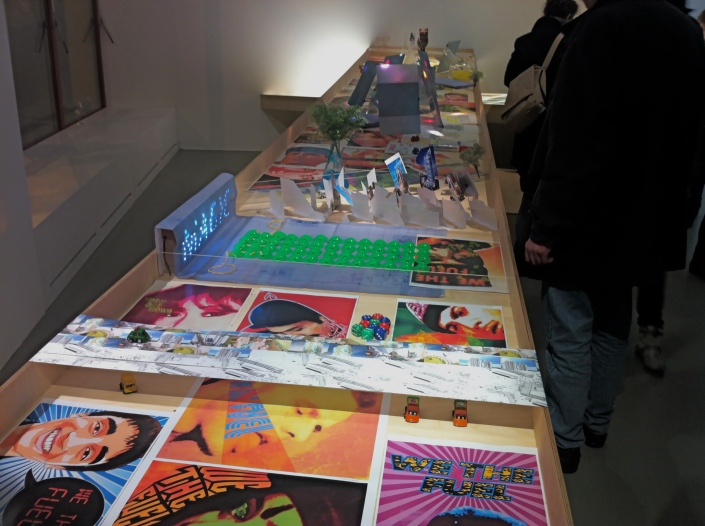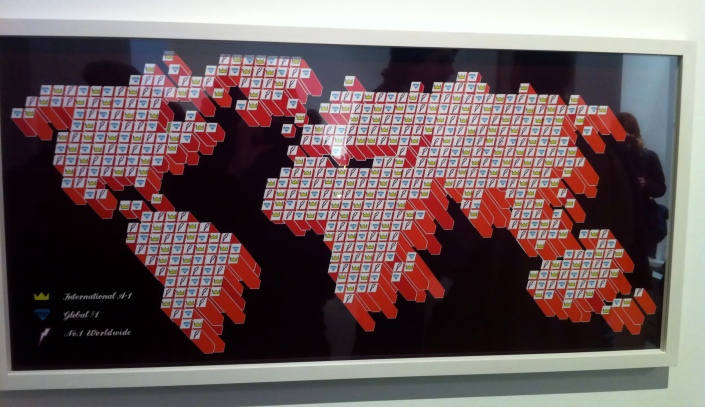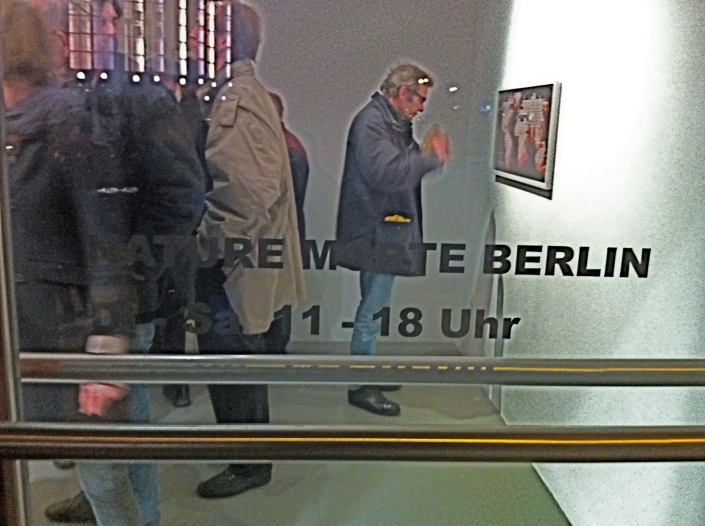‘Haul In, Cousin’, Andrew Kerr @ BQ Galerie, March 9th, 2012
The subjects of Andrew Kerr’s paintings – in his current exhibition predominantly paintings on paper – are objects and visual impressions or perceptions of everyday-life: a roof landscape, a still-life of casually arranged quotidian thing. Nonetheless, the depicted objects are given a strong presence mainly because they are represented in an unfamiliar way; for instance, emphasising a particular relationship between an object and the illusory space it inhabits or exaggerating physical conditions effecting the scene such as sources and reflections of light and properties of surface or breaking the expected development of the composition.
New perspectives on the well-known are suggested. Sometimes, the shadings of an object are more pronounced than the object itself, thus altering its identity by expanding it into the room. Another important characteristic device of Andrew Kerr’s works is the continuous, in some cases only partial, painting-over of a rendered object until it becomes nearly unrecognisable. Two further aspects that provide the depicted with the appearance of the unfamiliar are the influence of the carrier’s materiality such as the structure of the paper or canvas, and the colouring that tends to highlight the marginal. Furthermore, specifically associative colours are chosen from the palette; for instance, carnation colour: in one of the paintings one is tempted to see bodies whereas the large carnation-coloured fields of paint represent nothing but the background and the shadows of a small brown object that turns out to be a fruit. In other new works, the beholder feels certain to discern a landscape, broadleaf trees in the sunlight or scissors and a letter. But once one inspects the details, the objects and their relation to the surrounding space begin to dissolve, any clues and references seem to shed, and all the details disintegrate to shattered units that can never be assembled into a coherent picture again. However, in opposition to an impressionistic painting, the beholder cannot reintegrate the image one has believed to recognize at first sight by just stepping back. Andrew Kerr’s paintings keep questioning this very perception/cognition of one’s first superficial sight and the related rash comprehension of facts and contexts. They release us from the constraints of visual conventions and structures of thought by offering a subjective picture.
For the duration of the exhibition, the artist has replaced the wooden façade of the gallery’s main space with large boards of insulating material consisting of pressed fibres. The greyish, slightly pastel colour and structure of the boards correspond to noticeable formal aspects in Andrew Kerr’s works.
Windows III 16/03 @ Deutscher Künstlerbund–Projektraum, March 16th, 2012
The Deutscher Künstlerbund shows in its windows video projections of 31 students from the Kassel Art Academy and the University of the Arts in Berlin. The teachers of these arts colleges, the video artist Anna Anders, Bjørn Melhus and Maria Vedder proposed their students for the winter semester, the task of developing video projections specially made for the windows of the Deutscher Künstlerbund. The instructions to develop the works were that pieces must be related in form and content to the window as a screen and taking into account the special situation of the room on the ground floor (street level). Also the pieces mustn’t exceed 1’30 min length.
Some of the works presented here can turn through the context and dimension to surreal moments. The usually rather noble presenting merchandise such as shop windows are converted through the images in trash bin or stovepipes, in a dollhouse, a predator cage, a cowshed, an intensive care unit, a bathroom or eyeglasses,with enormous eyes squinting. Fights and love stories are shown between the two windows, a giant cordless drill pass from one window to the other, cars falling from the sky and other strange things.
Moving images can be seen through the development of digital video and display technology in the urban streets more and more often and therefore produces more public art opportunities. That is the 3rd year in a row that pedestrians in Berlin-Mitte vicinity (Rosenthaler Strasse, 11) will be challenged to pause and engage with art.
Videos on the windows will be running till March 16th (Tuesday to Friday from 18:00 to 24:00 Uhr)
Artist showing their video pieces: Dovile Aleksaite | Serhan Alsan | Philip Bauer | Sigurður Unnar Birgisson | Nora Bolz | BenBrix | Fabian Brunsing | Manja Ebert | Ana Esteve Reig | Frieda Femfert | Kerstin fresh |Jeanette Gosslau | Yuri André Halliday | Alessa Hansen | Tilman Hatje | Ingrid Ladurner |Meike Martin | Martin Steffen | Anna Maysuk | Kristin Meyer | Sabine Moore | Aiko Okamoto| Felix Ott | Franz Christoph Pfannkuch | Ann Schomburg | Beatrix Schubert | Lukas Thiele |Jana Tost | Johanna Wagner | Lu Wang | Bastian Wienecke
Text source: http://www.kuenstlerbund.de/deutsch/projekte/aktuell/index.html, free translation from German by me.
‘A–Z’, Adrian Sauer @ Klemm Galerie, March 9th, 2012
The researcher in the space of calculated images.
Text from Florian Ebner, 2012. It was the structuralist linguistics that decided in the 20th century to dissect the phenomenon of language into its smallest elements, into meaningful and distinguishable units. Like this it would be more successful, according to the systematic opinion of the structuralists, to explore this very familiar instrument of our communication, used by everyone. Next to the researchers the poets emerged, who experimented with the raw material of language, its sound, and in their own way they created concrete poetry, by identifying the distinct aesthetic qualities of these smallest elements.
The photographer and artist Adrian Sauer does not address verbal language, yet with the new digital world of images he does devote himself to another ever more important field of our communication – and he does it in a way that can be compared to the different methods of linguistics.
While he did devote some of his works to the semantic and pragmatic dimension of the use of images – how are images used and read in a specific context – his main interest lies in the “morphology” of the digital image, its “theory of form”: How is it assembled within its smallest parts? How does it work to transfer visible, physical reality into a saved, calculated image? What do the Raster of the new optical instruments provide?
His artistic work as such poses questions about the limits of the image in a time in which camera images increasingly become hybrid constructs, between light measurement and mathematical recalculation. In a provocative way, some of his works at first resemble technical test pictures, and yet these questions are included into the language and tradition of concrete and generative photography. That tendency of an abstract art which, since the great Hungarian constructivist László Moholy-Nagy, has been trying to get rid of the slavish, reproductive quality of photography and to replace reproduction with autonomous production of images (as such his famous conceptual pair from the 1920s).
In his newest work Schwarze Quadrate (Black Squares) Adrian Sauer points out clearly the fact that today’s digital cameras calculate – thus invent – a part of the image. The more precisely you align the structure of the motive with that of the instrument, the lower the identicalness of the emerging image. The limitation of the reproductive quality of the digital instruments reveals itself here, surprisingly, as the beginning of an “autonomous” image.
Another aspect of Adrian Sauer’s work is the question of a contemporary form of “abstract genesis” of images. More critically put: What today replaces Jackson Pollock’s “dripping” of the 1950s? Digital images are calculated images, and because of that free of chance. Sauer’s large panel picture gradient illustrates the attempt to sort the digitally representable colors according to their light levels.
Modern images, which is what the works of Adrian Sauer suggest, obey a mathematical, purely theoretical space, a world not made up of concrete physical bodies, whose appearance analog images were at least still reflective of. This departure into immaterialness in turn is being reflected in Adrian Sauer’s series A—Z (Brockhaus). It consists of 38 photographs that show the cardboard slipcases of the Brockhaus encyclopedia, as made apparent by the carefully printed back cover. The supplementary volumes go up to the year 2000, but there will be no new edition of this print version. The cartons, captured from the back, are presumably empty. The white surface of the cases and the bright pictorial space in which they are contained, symbolize the fact that the knowledge production of the future will no longer require black ink, but rather will take place within the white spaces of computers.
Text source: http://www.klemms-berlin.com/en/aktuell/
‘Back to the garden’, Agnieszka Brzezanska @ Kamm Galerie, March 9th, 2012
“Trees have long thoughts, long breathing and restful, just as they have longer lives than ours. They are wiser than we are, as long as we do not listen to them. But when we have learned how to listen to trees, then the brevity and the quickness and the childlike hastiness of our thoughts achieve an incomparable joy. Whoever has learned how to listen to trees no longer wants to be a tree. He wants to be nothing except what he is. That is home. That is happiness.” Herrmann Hesse, excerpt from Wanderings, 1918.
Agnieszka Brzezanska photographs, films and paints pictures of her daily surroundings in which she sees a particular significance. In her second solo show at Galerie Kamm Brzezanska takes on the idea of a return to a place of rest and nativeness and the relationship between humans and plants.
The installation of the show with large-formatted prints hanging from the ceiling of the gallery space, a photograph placed on the floor and a sculpture in the space, creates the overall allusion to a forest. Leafs and tree branches – painted, photographed, filmed or computer-generated – serve as the common motif that tie the pieces together. They cover up a nymph-like creature, for instance, or seemingly form an entity with the movement and colour of human hair. Two unconventionally installed paintings, leaning against each other may recall childhood memories of building a “hut” as a hiding place in play, following a natural instinct. The film, which is screened inside it, formally echoes the fragmented image of the leaf-covered photographs. It shows a sequence of an open-air screening of a performance by dancer and choreographer Pina Bausch, which Brzezanska filmed with a simple digital camera from the window of her studio. In the background, the orchestral tunes of Sacre du Printemps by Igor Stravinsky are heard.
In this exhibition one comes across objects, images and sounds that can be surprising, humorous, mystical or even uncanny – much like in nature. While the works evoke an atmosphere of the metaphysical and spiritual, Brzezanska always manages to maintain a clear view and precise technique in her pieces. Leaning on theorists like Stephen Harrod Buhner, she calls into question our own position within the natural order, reviving the canon of theories and debates regarding the human being’s relationship with nature. In The Lost Language of Plants(2002) Buhner describes how man’s emotional disconnection from the Earth and plants causes a loss of health in ecosystems as well as a loss of “understanding of who we are”. In the communication with plants thus lies a healing power and potential source of joy that modern society has widely disconnected from. By taking the viewer back to the garden, Brzezanska opens up the realm of questioning our own relationship with nature,possibly taking a first step to reconnecting and communicating with it. As the Canadian painter Emily Carr observed in her life-long pre-occupation with nature: “Trees love to toss and sway. They make such happy noises.”
Text source: http://www.galeriekamm.de/index.php?id=351&L=1
‘Set’, Gerold Miler @ Mehdi Chouakri, March 3rd, 2012
The show present works from Miller who departs the 3-dimensional “frame-like-form” for the first time. The pieces are a composition of two overlapping rectangular color fields that swings between shade in shade and high contrast associations in order to let the colors to take on main role. This play is counteracted by the rigor of repetition. The result is an optical color effect which is reminiscent of Albers’ Hommage to Square for example. The strategy of repetition is explicit in Minimal and Conceptual Art. The eye and its own aesthetic sense are being challenged, not only through the direct industrial and chromatic appearance.
The series call Set is a precise compilation of form, surface area and color. The hanging of the exhibition deliberately emphasizes this contrast-enhanced play. A series of seven work different sizes 60x40x3cm and 160x128x8cm await the visitor in the front space. In a second smaller room one is confronted with the dominating over-dimensional Set. (250x200x10,8cm) So the viewer experiences a shift in scale and weight, which almost seems menacing.
Text source: printed press release for the opening Gerold Miller in Galerie Mehdi Chouakri.
‘Reverse Engineering’, Raqs Media Collective @ Nature Morte Berlin, March 9th, 2012
Raqs Media Collective are showing their ongoing project „The Euphoria Machine“ comprised of two demonstration tables, various drawings, prints and monitors. The large installation takes the form of a laboratory, which works as a diagram for a conceptual engine of the desire that fuels capitalism. The artists put forward the hypothesis that it the human desire for joy, beauty, satisfaction and love, which fuels economic growth and perpetuates our continuously growing culture of consumption. The point of departure for this project is the existence of the machine and to examine the evidence of it around us, in plans, projections, advertisements, policy statements, blueprints, balance sheets and reports.
The current global financial crisis has emerged through acquiring and transacting things that are notional rather than real. This is due to the fact that, for some time now, we have been told that the calculus of prosperity depends on the acquisition and transaction of virtual assets, but not that they are in fact tied to very real costs. The title of the show, “Reverse Engineering” refers to the inversion of the financial apparatus at work during the economic crisis, which at current is fuelled by fear and sentiment rather than by euphoria. Currently, the euphoria machine’s exhaust only produces despair.
The Raqs Media Collective enjoy playing a plurality of roles, often appearing as artists, occasionally as a curators, sometimes as philosophical agent provocateurs. They make contemporary art and films, curate exhibitions, edit books, stage events, collaborate with architects, computer programmers, writers and theatre directors and follow their self-declared imperative of ‘kinetic contemplation’.
Text source: http://www.naturemorte.com/exhibitions/2012-03-11_raqs-media-collective-reverse-engineering/press-release/
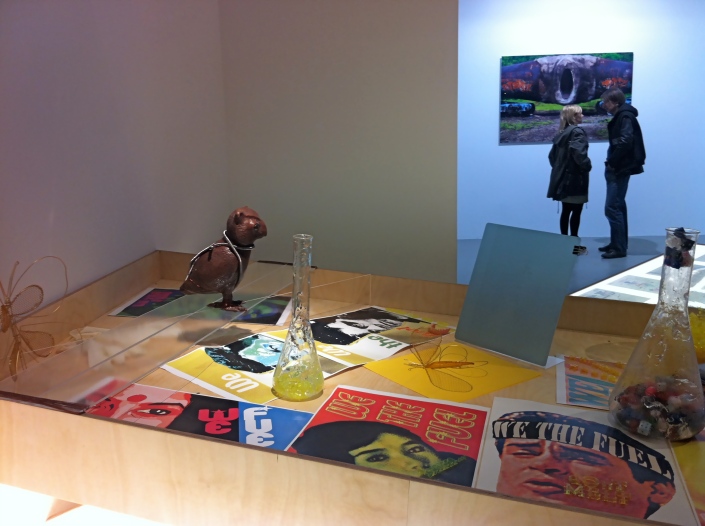
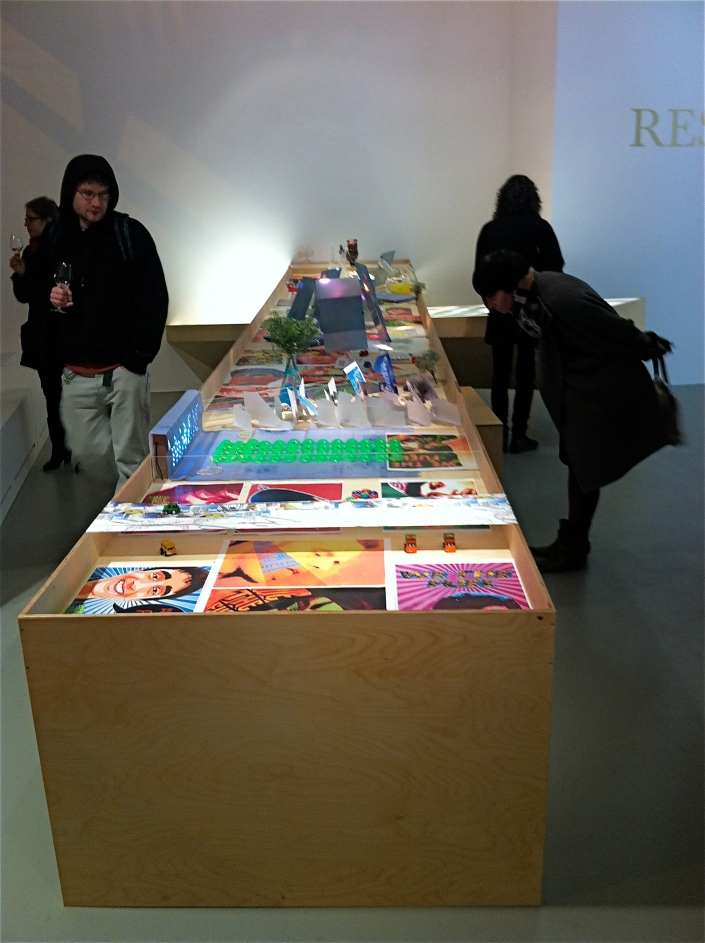
‘Die Gesetze der Malerei. §2: Ein Gemälde ist eine Fläche’, Sumiyo Nagai @ Espace Surplus, March 2nd, 2012
Ein Gemälde ist eine Fläche = A painting is a surface
Duchamp dreamt of the fourth dimension, of time going by and of movement within the strict frame of the picture. But there was no longer a painting. We decided to regard the surface as a dance floor, to resist the urge to enter the endless space inside the frame, to stay on the surface and dance. And we invite you to dance.
There is a deep mistrust of the spatial illusion in all painting and at the same time a great need to penetrate the canvas in all of us. Let’s try to stay afloat in the vast landscape of the painting while the eyes dance in the rhythm of colour and form. There is the elegance of the marionette to be reached, the oblivious grace of those lost in the pictorial space.
Text source: http://www.espace-surplus.com/index.php?/exhibition/past/
SUPER 8 & Mysterema @ Künstlerhaus Bethanien, March 6th, 2012
With the roots of video art intertwined with that of cinema, SUPER 8 derives its title from the mid-century motion picture film format of the same name. An artist-curated, video art exhibition organized by Christopher Grimes Gallery (based in Los Angeles). This ambitious video exhibition features the works of forty international contemporary artists. Each week of SUPER 8 focuses on a different city: Berlin, Dublin, Lisbon, London, Los Angeles, Rio de Janeiro, San Francisco, and Tokyo, eight artists will curate a week’s worth of programming with fellow artists from their respective cities. Within that week, a day is dedicated to the work of one artist. In addition SUPER 8 contextualizes artist work within a global community of artists working in the same media. Through various approaches, from a variety of generations, SUPER 8 presents a cross section of this often misunderstood and underestimated form of art. During the opening, short excerpts were exhibited.
The excerpt correspond to “Dust defying gravity”, 2003 by Grace Weir, shown on Tuesday, 6th of March
Mysterema, by Gabrielle de Vietri is showing two new works: “Captcha” is an audiovisual projection for which the artist has combed the Internet painstakingly in search of so-called captchas – those obviously meaningless sequences of letters that we must type in to assure no machine-generated spam is sent out.
Vietri’s works are multimedia, using performance, video, photography and text. They often take the shape of small experiments, and illuminate the evolution of identity and patterns of human behaviour before the background of socio-cultural and philosophical issues. In the exhibition De Vietri has written down and categorised a large number of captchas and, on the basis of these word-creations, has written a narrative plot in the style of a fairy-tale or a fantasy novel. The story, spoken by a professional actor, can now be heard in the exhibition space; at the same time, more and more new, large-format captchas are projected onto the wall. Thus, plenty of space develops for the visitor’s own imagination and individual interpretations of de Vietri’s imagined story.
A second piece comprises two components: “Anonymous Lovers Discuss the Work of Cyprien Gaillard” is an audio work, for which the artist has recorded the conversations of a couple as they pass through a Cyprien Gaillard exhibition in Paris. In the Künstlerhaus she has supplemented this sound recording with “Karstadt Courting Chair”, a seat suitable for intimate conversation, set into an island of quiet in the room: visitors are invited to sit down and listen to the two unknown lovers’ conversation – not only about art but also about personal matters, feelings, shared memories etc., offering the viewer both a challenge and a chance to develop his own interpretations of those many suggested, fragmentary stories.
Text source: http://www.bethanien.de/kb/index/trans/en
Windows III 02/03 @ Deutscher Künstlerbund–Projektraum, March 2nd, 2012
The Deutscher Künstlerbund shows in its windows video projections of 31 students from the Kassel Art Academy and the University of the Arts in Berlin. The teachers of these arts colleges, the video artist Anna Anders, Bjørn Melhus and Maria Vedder proposed their students for the winter semester, the task of developing video projections specially made for the windows of the Deutscher Künstlerbund. The instructions to develop the works were that pieces must be related in form and content to the window as a screen and taking into account the special situation of the room on the ground floor (street level). Also the pieces mustn’t exceed 1’30 min length.
Some of the works presented here can turn through the context and dimension to surreal moments. The usually rather noble presenting merchandise such as shop windows are converted through the images in trash bin or stovepipes, in a dollhouse, a predator cage, a cowshed, an intensive care unit, a bathroom or eyeglasses,with enormous eyes squinting. Fights and love stories are shown between the two windows, a giant cordless drill pass from one window to the other, cars falling from the sky and other strange things.
Moving images can be seen through the development of digital video and display technology in the urban streets more and more often and therefore produces more public art opportunities. That is the 3rd year in a row that pedestrians in Berlin-Mitte vicinity (Rosenthaler Strasse, 11) will be challenged to pause and engage with art.
Videos on the windows will be running till March 16th (Tuesday to Friday from 18:00 to 24:00 Uhr)
Artist showing their video pieces: Dovile Aleksaite | Serhan Alsan | Philip Bauer | Sigurður Unnar Birgisson | Nora Bolz | BenBrix | Fabian Brunsing | Manja Ebert | Ana Esteve Reig | Frieda Femfert | Kerstin fresh |Jeanette Gosslau | Yuri André Halliday | Alessa Hansen | Tilman Hatje | Ingrid Ladurner |Meike Martin | Martin Steffen | Anna Maysuk | Kristin Meyer | Sabine Moore | Aiko Okamoto| Felix Ott | Franz Christoph Pfannkuch | Ann Schomburg | Beatrix Schubert | Lukas Thiele |Jana Tost | Johanna Wagner | Lu Wang | Bastian Wienecke
Text source: http://www.kuenstlerbund.de/deutsch/projekte/aktuell/index.html, free translation from German by me.
